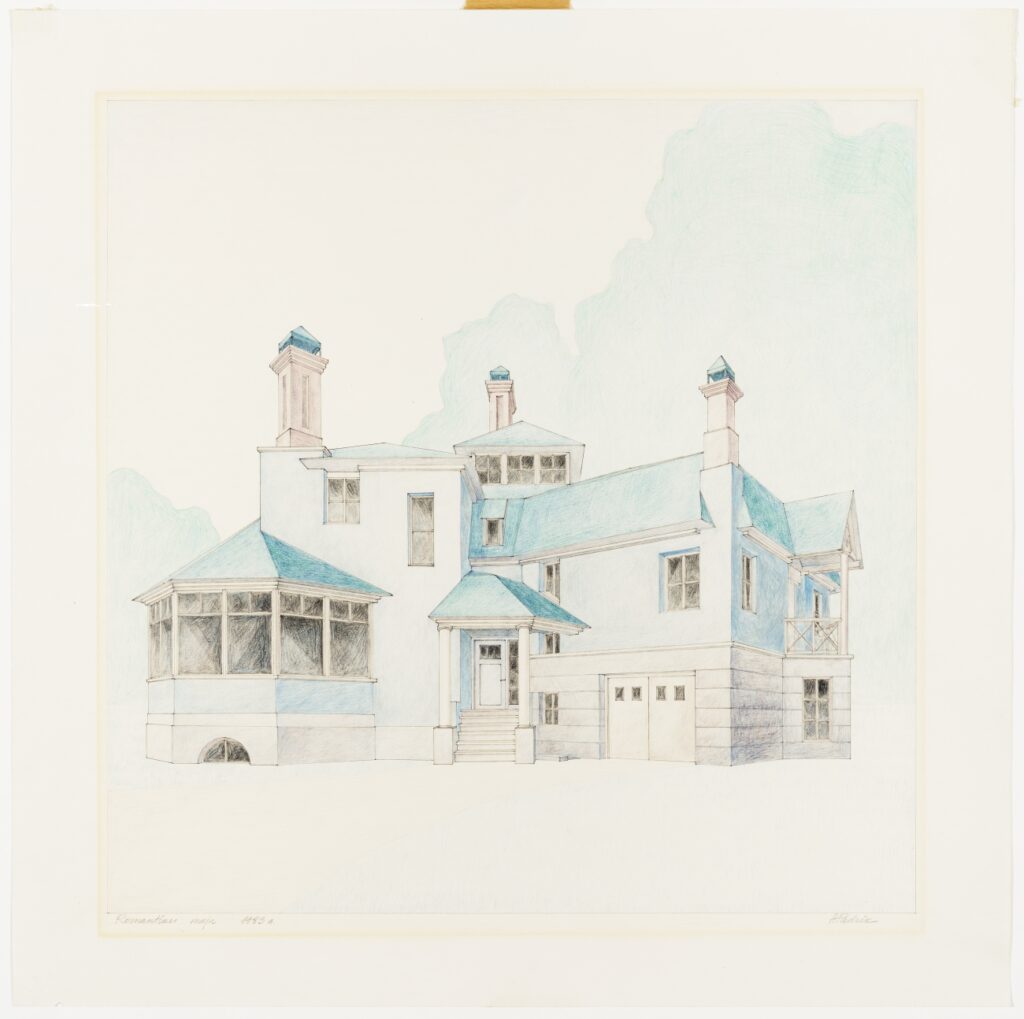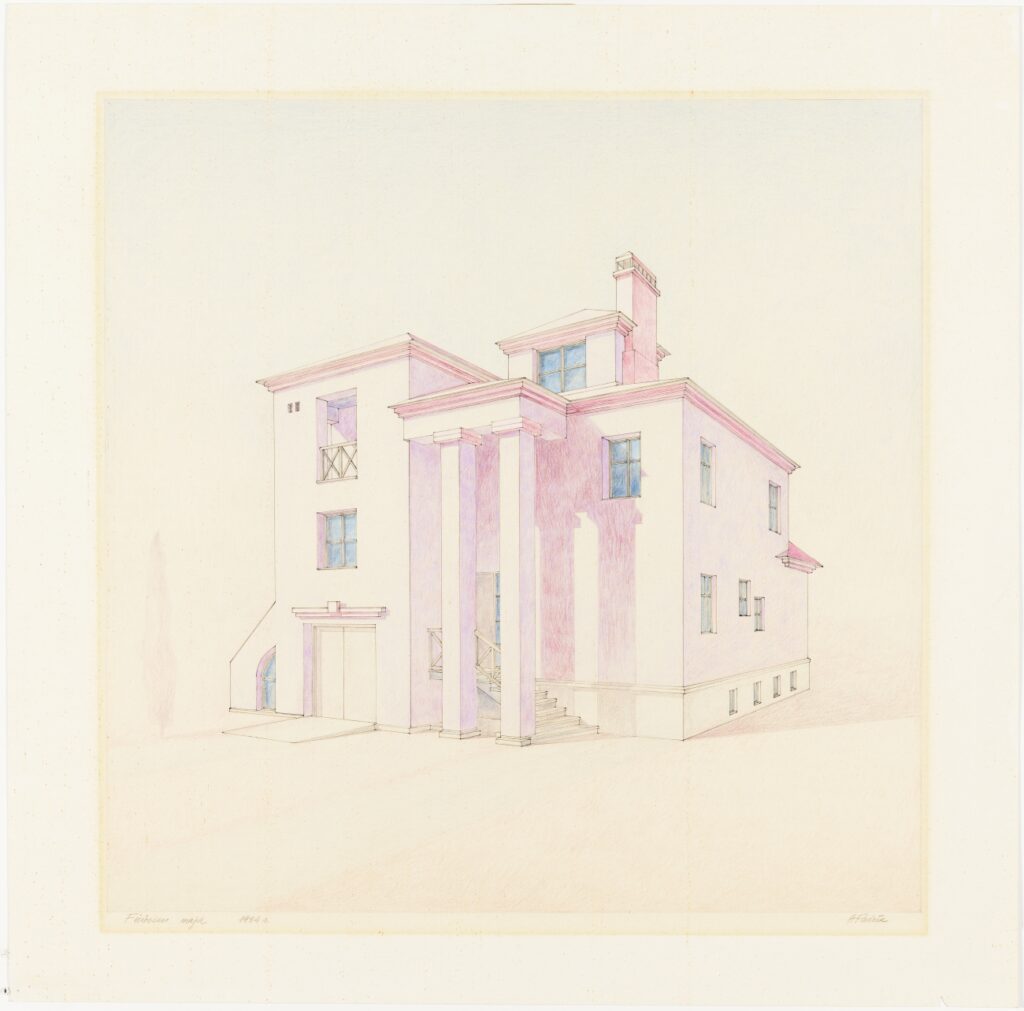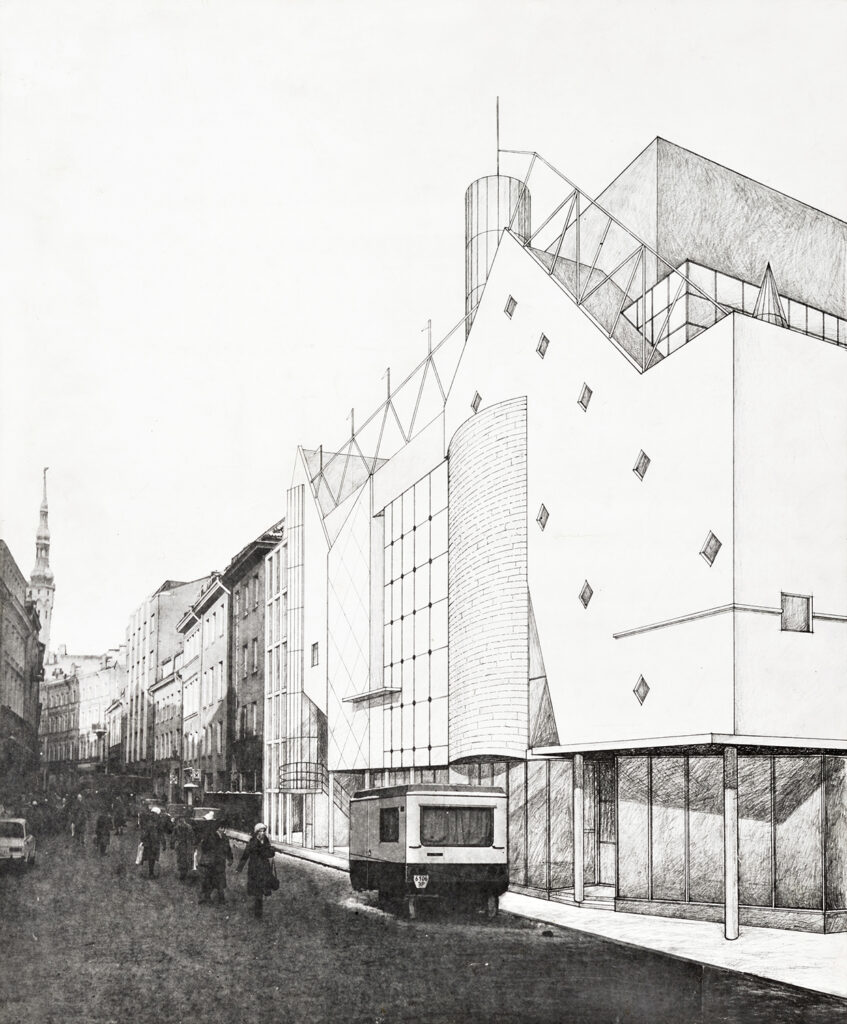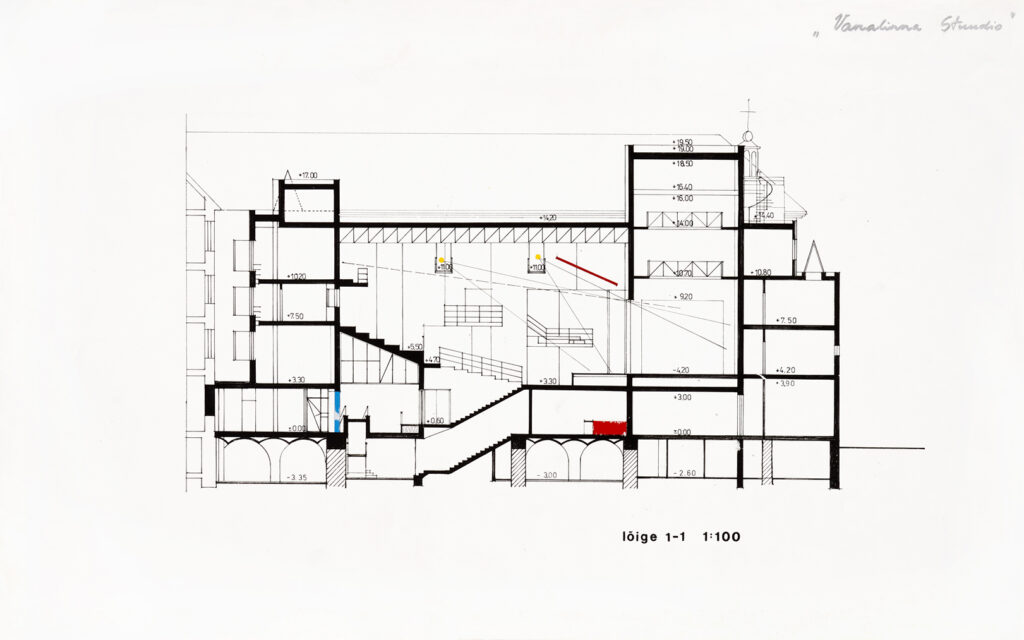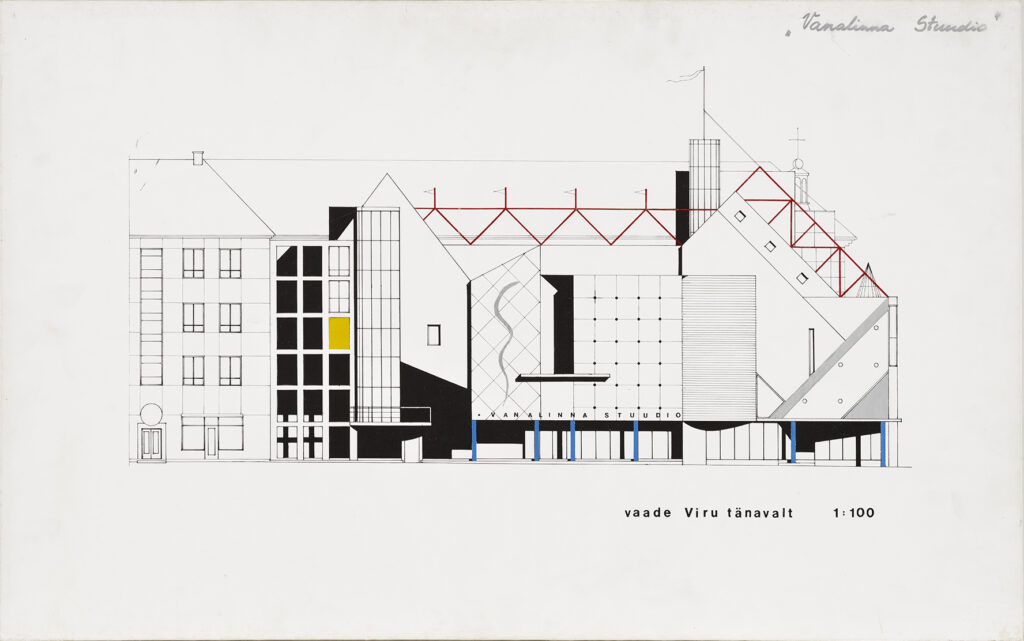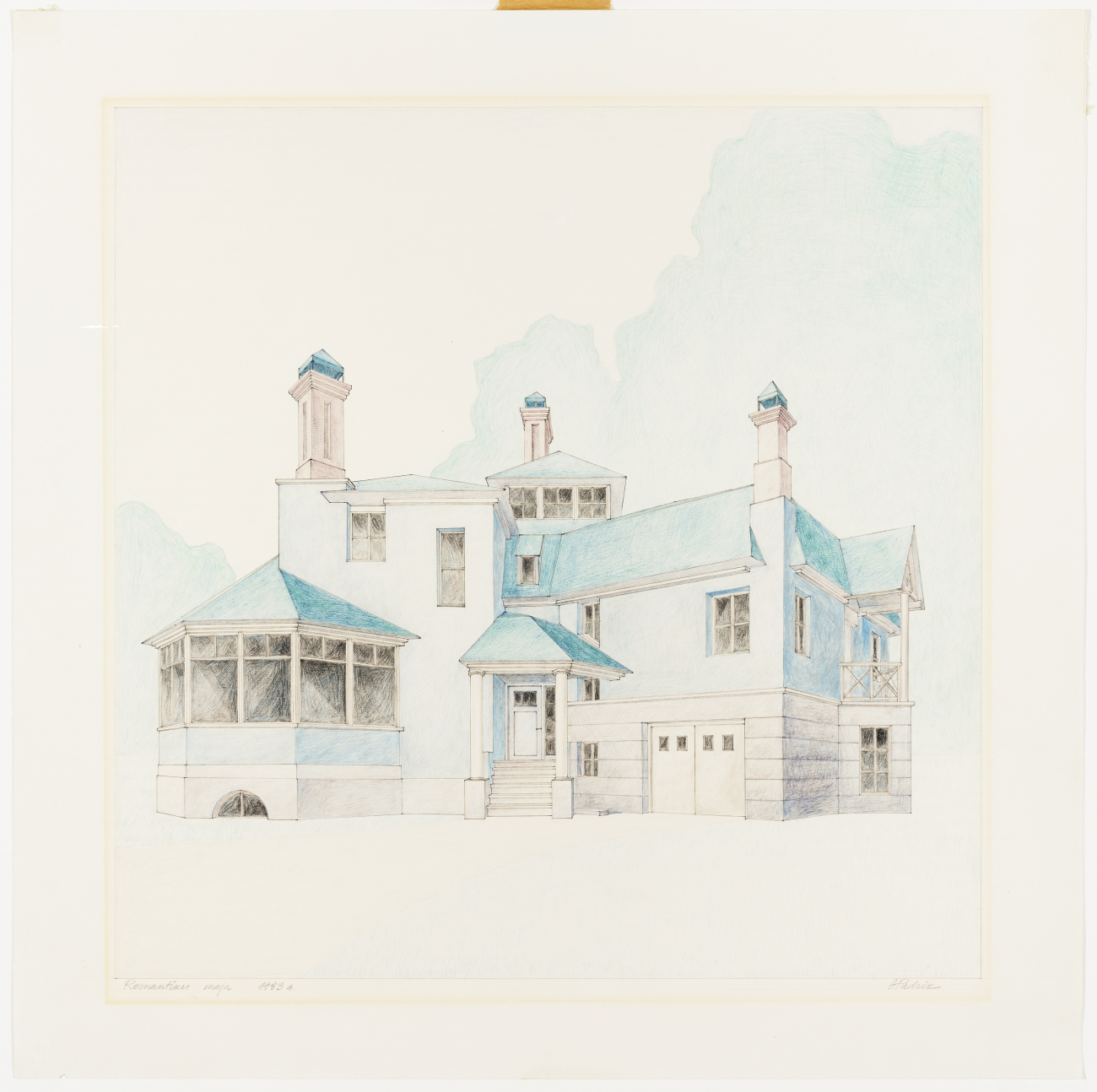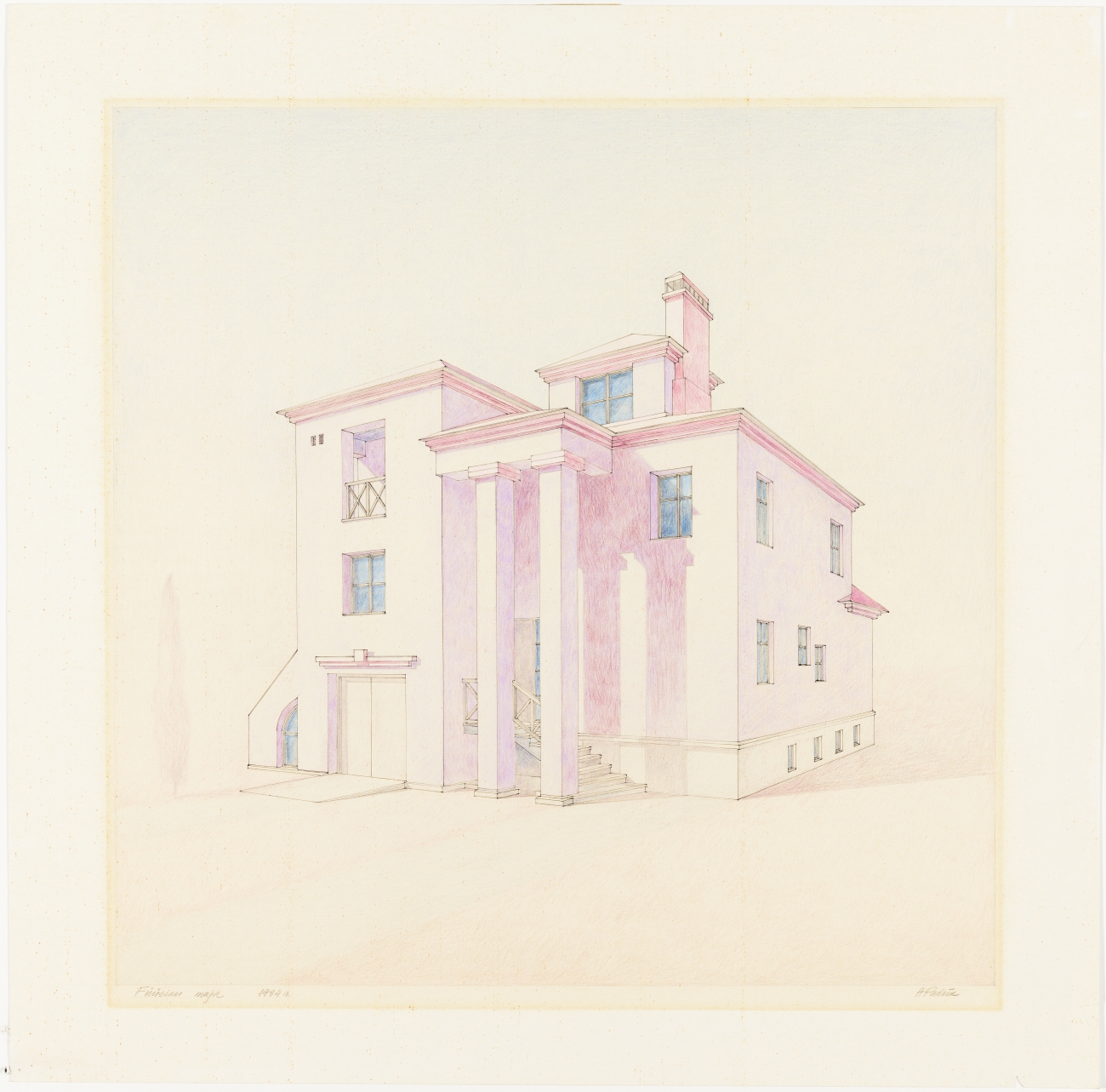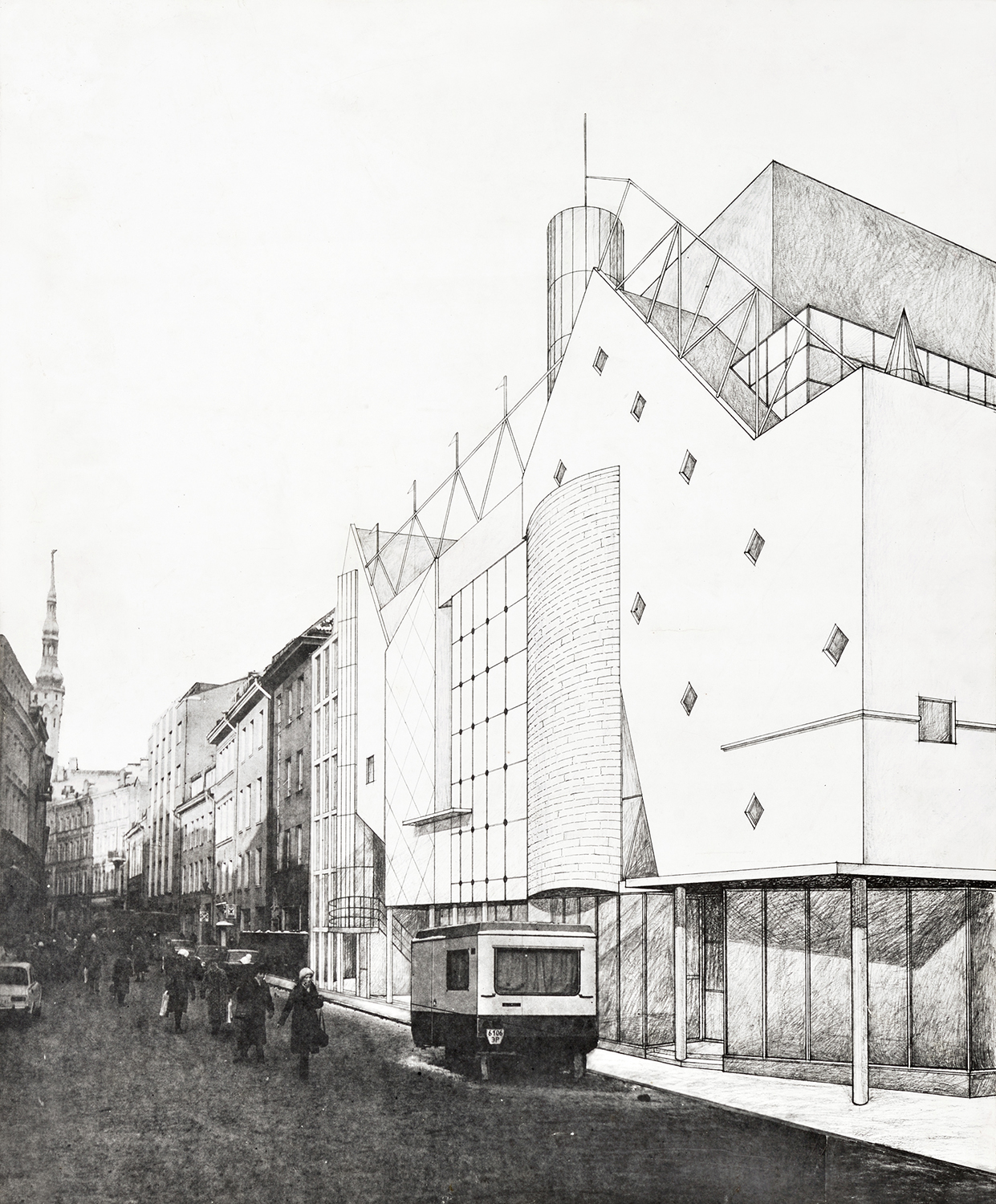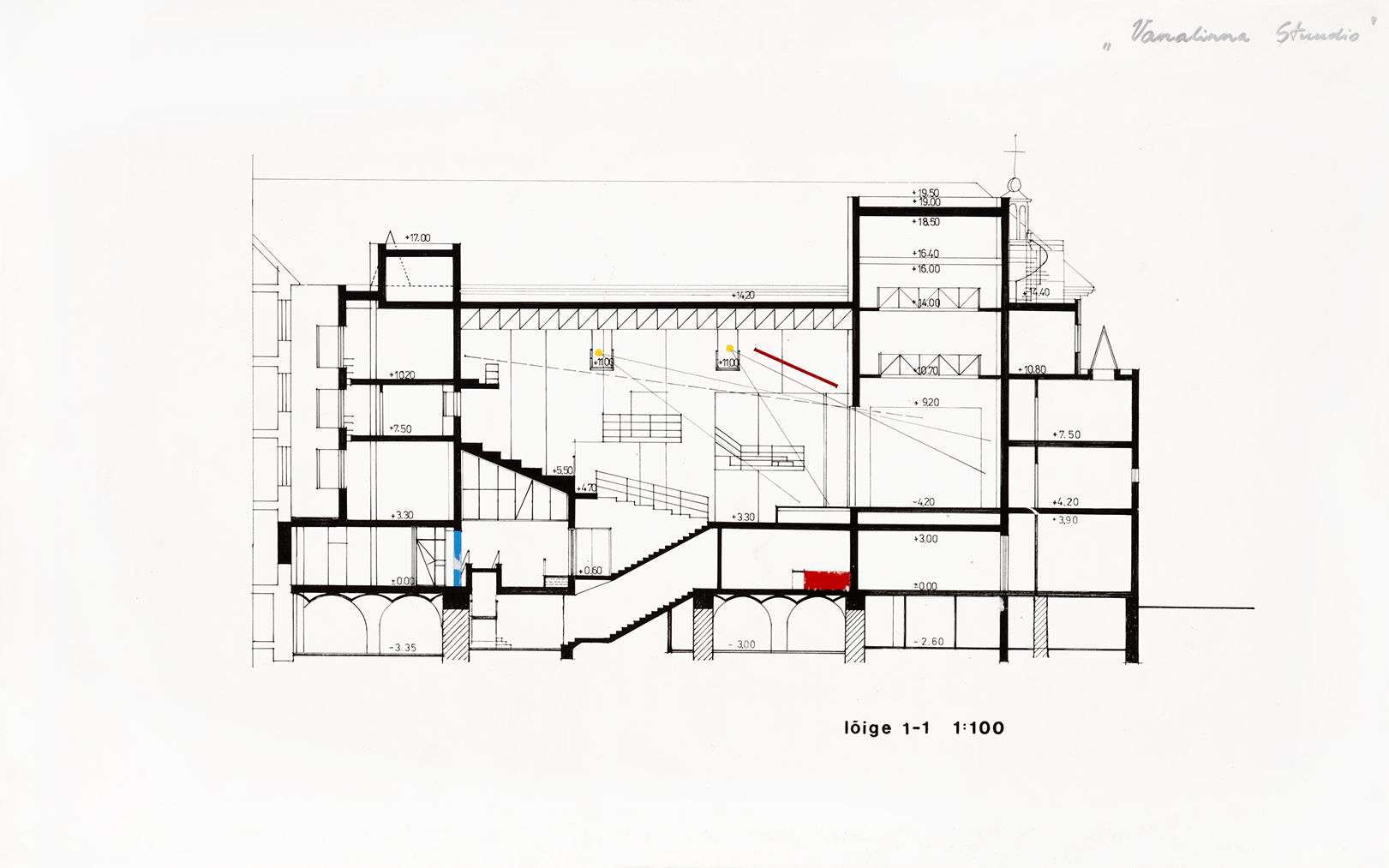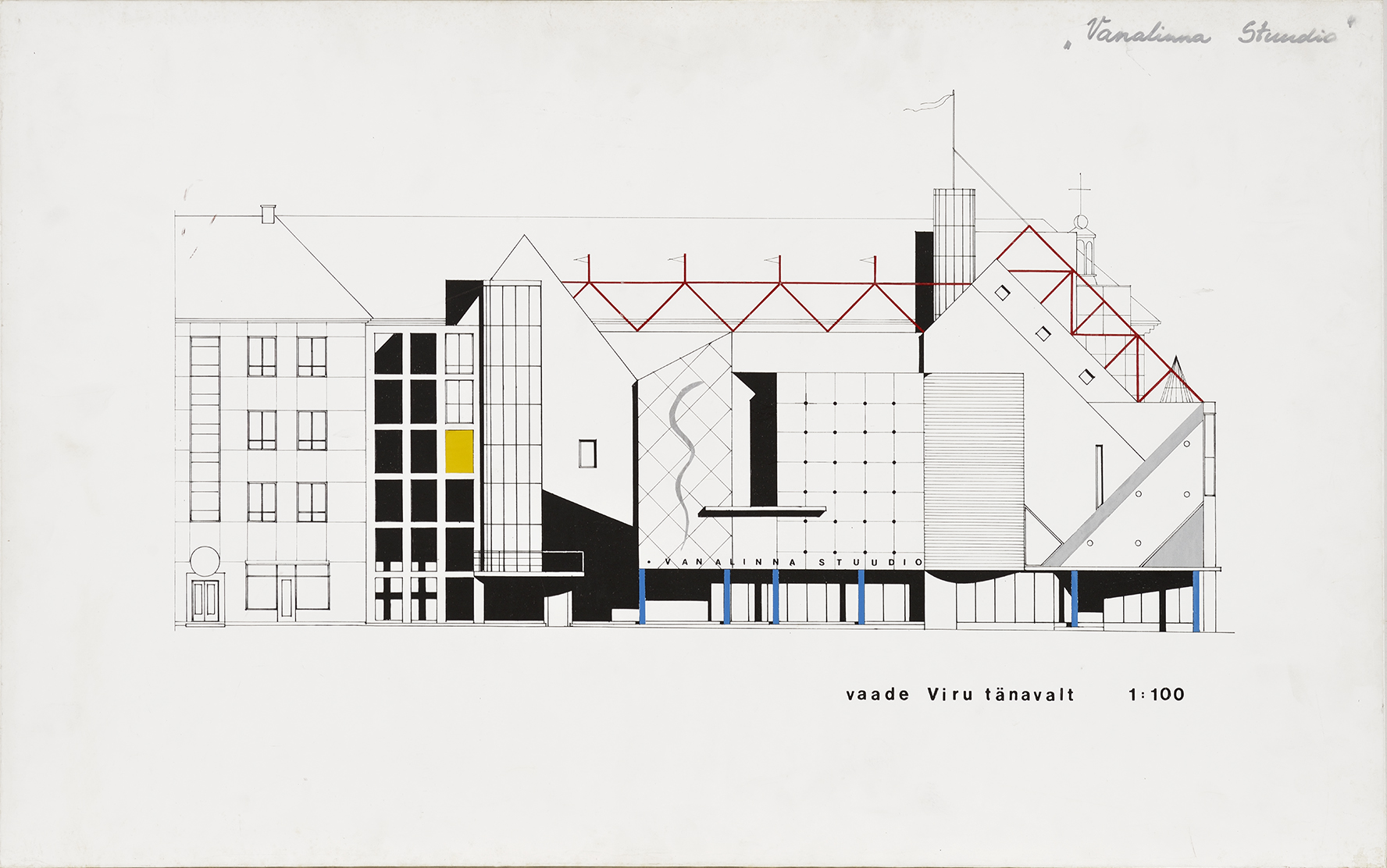- House for a Romantic. Ain Padrik
- House for a Physicist. Ain Padrik
Ain Padrik, 1983, 1984. EAM 55.1.3 ja 55.1.4
House for a Romantic – House for a Physicist
At the end of the 1970s and the beginning of the 1980s, architecture and especially residential building was starting to look at historical examples, and a relationship with the client or with the location of the building was deemed to be important. Designing a house provided a chance to experiment with the limits of freedom of expression and set an intriguing assignment to interpret the client through architecture. The romantic’s house followed the example of the Arts and Crafts movement in 19th-century England. This movement cherished handicraft and often employed motifs from medieval architecture: romantic towers and complex roof landscapes. The physicist’s house with its more clearly defined volumes proceeds from the wishes of the client. The physicist did not ask for large windows, preferring a lot of wall space and dimly lit interior. A thorough working project was also finished in addition to this sensitive perspective view. Construction received a building permit, but the physicist’s house was never completed. Ain Padrik donated the drawings to the museum in 2016. Text: Sandra Mälk




